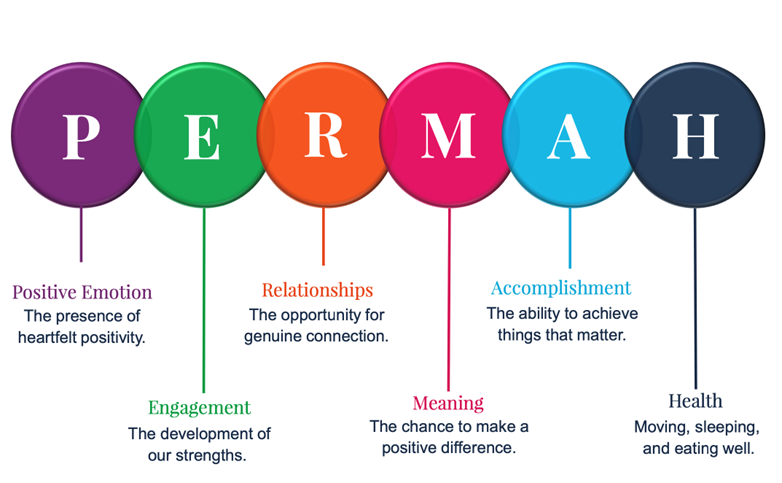6 steps to create a mentally healthy and vibrant workplace
It’s estimated that we spend a third of our lives at work. That’s around 90,000 hours on meetings and paperwork or stocktakes and phone calls over our working lives.
So, it’s easy to understand why you might not feel like you have the time to think about your own wellbeing let alone the wellbeing of your employees or your co-workers. But knowing how people are coping with both work and life pressures is just as important as paying your suppliers or ticking off your to-do list.
Workplace wellbeing isn’t just personal, it’s measurable:
- 45% of Australians experience a mental health problem at least once in their lifetime, according to a national study of mental health and wellbeing.
- In 2022, Safe Work Australia found that 52% of serious mental stress claims in Australia were because of work-related issues. These issues included harassment, bullying, work pressure and occupational violence.
- Poor workplace wellbeing affects workers’ mental health and productivity, costing our economy up to $22.5 billion a year.
R U OK?Day is on Thursday 11 September 2025. It’s a great reminder that everyday check-ins with colleagues, like asking ‘are you OK?’, play a key role in workplace wellbeing.
Checking in is just one of the keys to a better workplace. The PERMAH framework developed by Dr Martin Seligman (2012) outlines 6 evidence-based elements that boost both wellbeing and your workplace culture.

Step 1 – Positive emotions: ‘AMP’ up your understanding of stress
A healthy workplace doesn’t mean zero stress. It’s about knowing how to manage it. Stress is natural, especially when running a small business and often it’s just your body’s way of saying something important is at stake.
By noticing the signs of stress in yourself and your employees, Associate Professor of Psychology at Stanford University Dr Alia Crum, found we can harness our body’s stress responses to help us meet life with the energy and courage we need to deal with whatever is at stake.
You can help your workplace ‘AMP’ up an understanding of stress by encouraging your people to:
- Be Aware that when they feel stressed, their body is trying to get their attention by making them feel uncomfortable (sweaty hands, racing heart, tight jaw or hunched shoulders).
- Find Meaning for these feelings by asking them what's happening that's important and may not be going the way they want.
- Prioritise conversations and/or actions that can positively impact the outcome of what's unfolding. Remember, tiny steps can have a mighty impact because they motivate people to move forward with confidence.
Whether you’re a sole trader or run a small team, understanding the signs of stress can help you and your employees maintain a positive frame of mind. Sometimes stress can’t be avoided, but we can manage how that stress affects us and do things to help reduce it.
Step 2 – Engagement: give strength focused feedback
High performing teams give 6 times more positive feedback than average teams. Low performing teams give almost 2 times more negative feedback. Focusing on strength based feedback can make a big difference and the ‘THANK’ method makes it easier to do.
- Track:What is the positive impact you’ve seen this person’s work have on others? How specifically might they be making work or life easier or better?
- Highlight:What can you see them learning, doing, and/or delivering that is making this positive difference that you value?
- Appreciate:What strengths – the things they are good at and enjoy doing – can you see being used to make this effort and/or outcomes possible?
- Nurture:How can these strengths be built on? How might they avoid overplaying or underplaying their strengths that could help improve their performance?
- Kindle: What support might they need/want and what does this look like?
Step 3 – Relationships: build psychological safety
Vibrant workplaces welcome honesty, prioritise learning, encourage asking for help and support taking risks together. Everyone struggles at work from time to time. Workplaces that normalise the feeling of struggling can promote healthy learning and growth.
Creating an environment where people feel comfortable speaking up can help everyone grow and do their best work. One way to build this kind of psychological safety is by using these ‘Safety Check Chat’ questions to check in with your team:
- What’s working well?
- Where are we struggling?
- What are we learning?
- What do we want to try next?

Step 4 – Meaning: create a giving culture
We long to be more than the sum of the tasks we perform at work. The good news is that researchers have found that meaning can be found in any job by helping people identify the difference their work makes to others. Encourage a healthy workplace by getting people to invest in 5-minute favours that make a positive difference in someone else’s life by:
- offering to help with a hands-on task
- sharing their expertise (example: offering their skills)
- coaching or mentoring others (example: teaching someone how)
- passing on favourite resources (example: books, podcasts, articles, recommendations)
- supporting a colleague by listening to their struggles and/or successes.
Step 5 – Accomplishment: setting and celebrating learning goals
A vibrant workplace knows that mistakes aren’t failures, they’re part of how we get things done. Teams that embrace a growth mindset understand that everyone brings talents and skills to the table, but there’s always room to learn and improve. To help your team develop their growth mindsets you can ‘SET’ learning goals:
- Spark your curiosity: Challenge your mind by picking a small learning goal that can make a big difference.
- Experiment: Act on your learning goal within the next 24–48 hours. Remember as long as you show up, give your goal your best shot, and stay curious about the results, you can’t fail.
- Tune into feedback: Measure your progress, seek feedback, and reflect on what you’re learning to move closer to your goals.
Step 6 – Physical health: the need for rest and recovery
Vibrant workplaces recognise the need to switch work and recovery. Short breaks throughout the day help everyone stay energised, healthy and ready to do their best.
Recovery doesn’t mean you need to take a nap in the back room or under your desk. Researchers have found that short breaks allow the thinking parts of our brains to rest. This can be just as effective as naps. Here are some easy ways to add these to your workplace:
- Encourage ‘walk and talk’ meetings/discussions where possible.
- Encourage shared lunch breaks, eating together away from desks or finding an external lunch location.
- Provide exercise cards/posters for quick stretches between tasks.
- Organise fun workplace challenges that encourage activity and involvement, e.g., a sit-stand challenge to see who can hold the position the longest.
- Allow short social breaks like tea/coffee conversations, which help rest the brain and build connections between employees.
How to create change in the workplace
Business owners and leaders may face challenges when trying to bring about behaviour changes. Professor James Prochaska (a leading researcher in behaviour change) highlights that there are 3 common derailers when it comes to caring for our wellbeing. These include:
- ‘I don’t want to’
- ‘I don’t know how to’
- ‘I don’t think I can’.
Creating safe spaces for learning and growth can help break down workplace barriers. Business owners should encourage curiosity instead of judgment and help employees rethink how they approach and interact with others.
- Instead of making assumptions, slow down and ask questions to understand.
- Rather than being embarrassed to ask questions, assume learning is helpful and seek/offer support.
- Instead of complaining about someone’s performance, assume everyone is capable and spark kind conversations to enable growth.
- Rather than pointing the finger and blaming others, encourage shared responsibility and create transparent and safe spaces for accountability.
Building a vibrant workplace culture is an ongoing process requiring long-term strategies. A learning loop can be helpful to enable continuous improvement:
- Act: What have you tried? Why did it matter to you?
- Assess: What went well? Where did you struggle? What did you learn?
- Adjust: What will you try next? Do you need support?
Building a healthy and vibrant workplace doesn’t happen overnight and you don’t have to do it alone. It’s done by encouraging a workplace culture of positive behaviours every day.
It’s the small things that count in the end. Researchers suggest that small and consistent ‘wellbeing wins’ amplify our confidence and motivation so we can scale up our efforts over time.
Small changes can have big results
In a vibrant workplace, people feel safe, energised and ready to collaborate.
They’re resilient and productive, learning and growing together through both highs and lows.
Ask yourself: are you creating this kind of workplace culture?
Start small – implementing even one wellbeing strategy today can make a meaningful difference now and into the future.
Let’s make R U OK?Day the opportunity to not just ask a question, but to create sustainable and vibrant work environments where wellbeing is prioritised and businesses perform at their best.
For more information on R U OK?Day, visit R U OK? website.
Discover how to create healthier, happier workplaces with the Wellbeing Lab website.
Tools to improve your workplace’s mental health
- Work Safe Victoria’s mental health: safety basics
- The Victorian Mentally Healthy Workplaces Framework | vic.gov.au (www.vic.gov.au)
- Wellbeing Action Tool - Beyond Blue